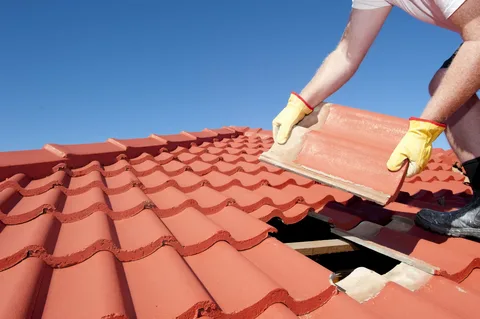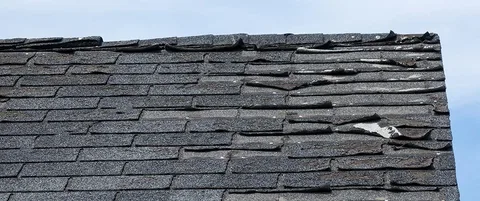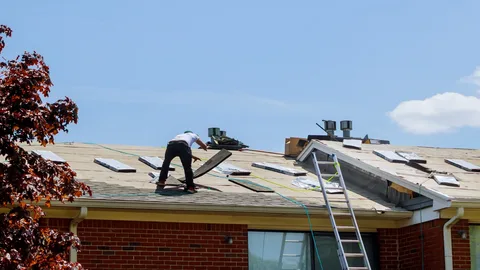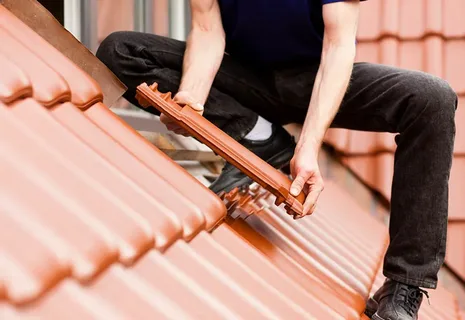Yes, the dwelling coverage in a homeowner’s insurance policy helps with losses, but only those caused by a covered peril, such as fire, vandalism, hail damage, and damage caused by a toppled tree during storms. General wear and tear, lack of proper maintenance, or age-related deterioration is excluded from coverage. You will also likely have to pay a deductible before your insurer helps with the costs, and your policy’s coverage limit will apply. If your roof is older, your insurance company may only agree to actual cash value (ACV) coverage.
Don’t Get Caught Off-Guard: Navigating Roof Repair Coverage With Your Insurance Policy
A severe hailstorm battered my neighborhood last year, and afterwards, I noticed dents in my car and, more concerningly, a leak in my bedroom ceiling. After inspecting my roof, I saw several missing shingles and other signs of hail damage. After documenting the damage with photos and a description of a hailstorm, I contacted my insurance company to file a claim. An adjuster visited to inspect the damage and confirmed the hail damage, which was a covered peril under my policy. Improper installation and neglected roofs are the reasons for the denial of many claims each year. Policies typically cover damage that happens suddenly and accidentally, not issues that develop gradually.
| Important fact Many insurers are moving away from full Replacement Cost Value (RCV) coverage for roofs and toward Actual Cash Value (ACV). Some companies are also using a roof payment schedule to formalize depreciation based on age. |
Are roof repairs covered in your insurance policy? Here’s what every homeowner should know about roof repair coverage.
- What Triggers Roof Claims Payouts?
Storm Damage
Storm damage triggers roof claim payouts if there are visible impacts like hail hits, wind-blown debris, or water intrusion. Compare your contractor’s estimate to the insurer’s offer and understand whether your policy is based on actual cash value (ACV) or replacement cost (RC).
Typically, the storm conditions are defined as:
- A common threshold for wind speed is gusts of at least 48 knots or 55 mph.
- Torrential rain of at least 25 mm per hour can qualify.
- For heavy snow, a depth of at least 12 inches (30 cm) in 24 hours.
- Intense hail that damages hard surfaces or breaks glass
- Other atmospheric events, like lightning.
Fire
Damage to your roof from fire is typically covered under dwelling coverage, though coverage details and replacement costs vs. ACV will influence the payout.
Vandalism
Roof damage is typically covered as a covered peril if your home has been vandalized. You may also be covered for additional living expenses if you need to move out of your home during repairs.
Falling Objects
It is a common covered peril under most home insurance policies, including damage from falling trees, debris, or even meteors.
| Did you know? According to a 2025 report from Verisk, roof repair and replacement costs reached nearly $31 billion in 2024, up nearly 30% since 2022. Verisk’s Roof Condition Score (RCS), drawn from Aerial imagery analytic solutions, and the Roof Age solution enable insurers to enhance underwriting accuracy, make informed pricing decisions, and proactively manage risks. |
- When is a roof damage claim denied?
Lack of Maintenance
Leaks or damage resulting from your failure to perform regular maintenance are usually excluded.
Age-related Deterioration
Material is natural if your roof has reached or exceeded its lifespan, so your insurance claim may be denied. Some companies may offer limited coverage.
Normal Wear and Tear
General deterioration is a normal process, not covered by homeowners’ insurance policies.
Improper Installation
Roof insurance claims do not cover damage from improper installation, as this is usually an exclusion in homeowners’ policies. If the covered event, like the hailstorm, also caused the damage, your insurance might cover the cost of reroofing, but you’d need to prove the damage was from the storm, not the initial poor installation.
| Fast Fact Some state laws require insurers to pay for a full replacement to ensure a uniform appearance if the new materials don’t match. |
Conclusion
Homeowners’ insurance covers roof repairs if the damage results from a sudden, accidental event listed as a covered peril on your policy, such as fire, wind, hail, or falling debris. However, the coverage is typically excluded if the damage results from poor maintenance or normal wear and tear or if the damage is nonstructural and purely cosmetic. You’ll need to pay your policy’s deductible before your insurance coverage kicks in.
FAQs
What are the contributing factors to the rise in claims?
More frequent and severe weather events, worsened by climate change, an aging housing stock, and rising costs for materials and labor, are driving the increase in claims costs.
Why is home insurance going through the roof?
A surge in storm-related claims, rising costs, and outdated inspection practices have pushed insurers to limit coverage, increase premiums, and shift more financial responsibility to homeowners.
What should you not do when making an insurance claim?
While temporary repairs are a good idea, an insurance company may deny a claim if permanent repairs are made before the damage is inspected.


